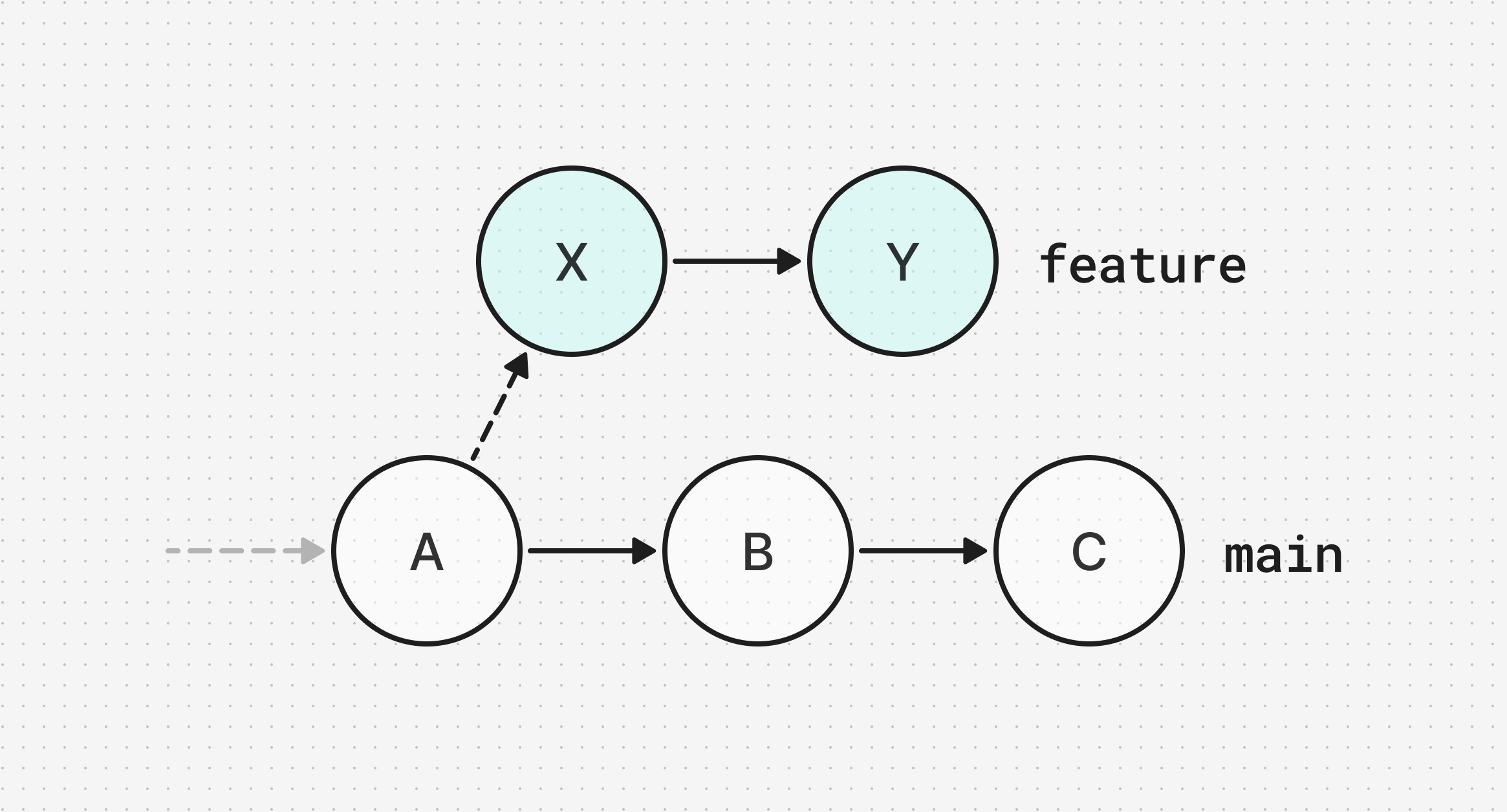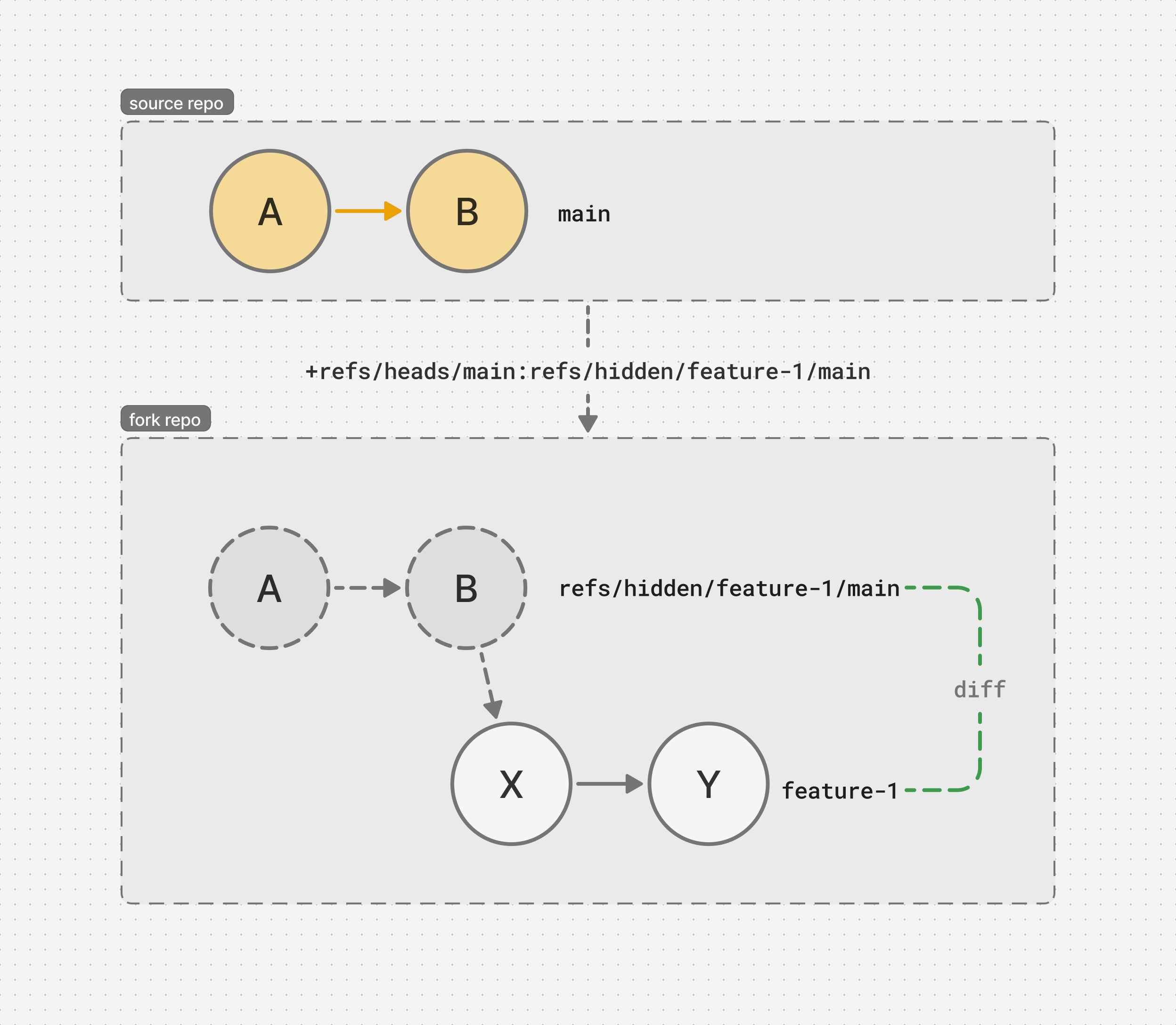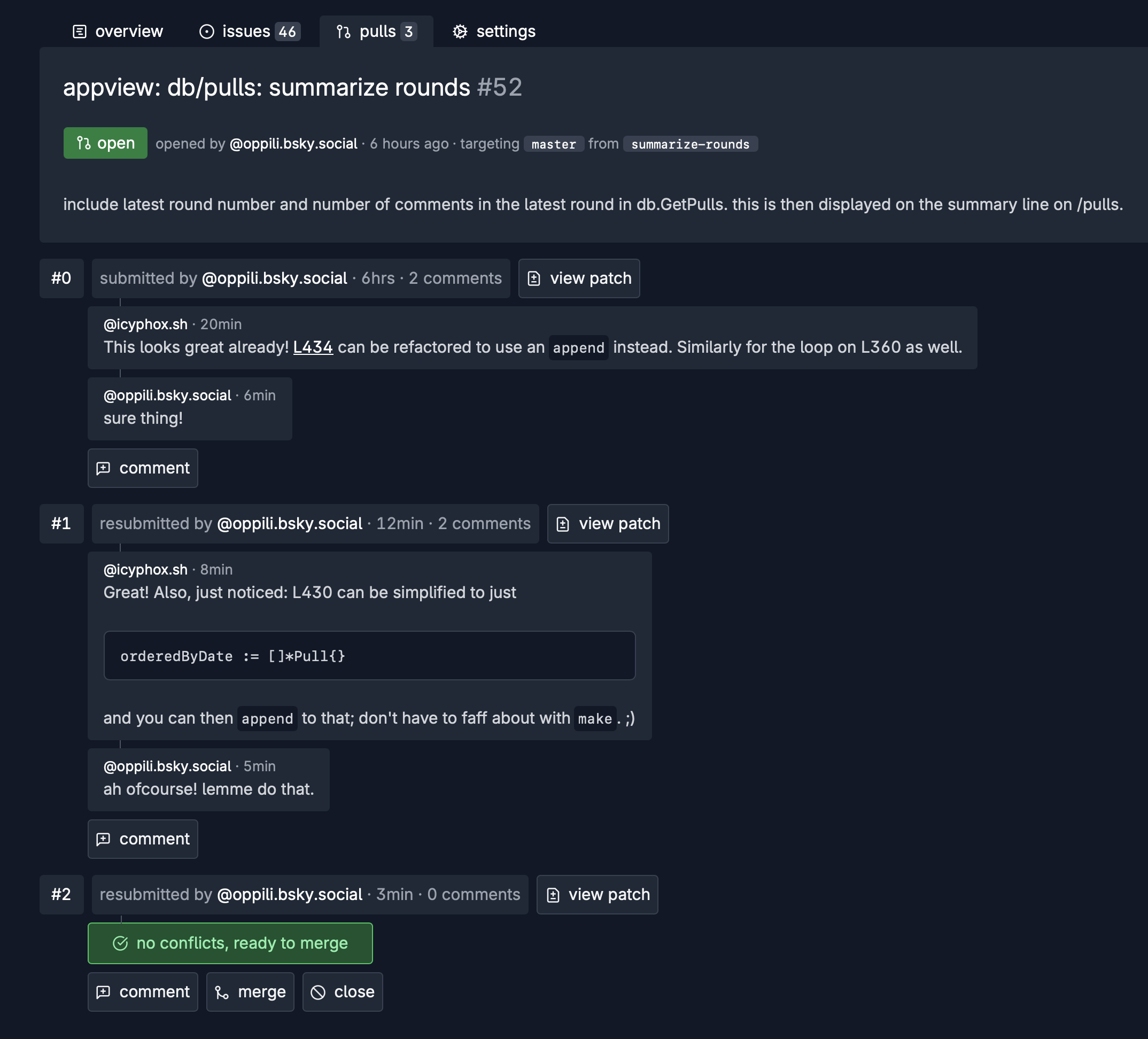We’ve spent the last couple of weeks building out a pull request system for Tangled, and today we want to lift the hood and show you how it works.
If you’re new to Tangled, read our intro for the full story!
You have three options to contribute to a repository:
- Paste a patch on the web UI
- Compare two local branches (you’ll see this only if you’re a collaborator on the repo)
- Compare across forks
Whatever you choose, at the core of every PR is the patch.
First, you write some code. Then, you run git diff to
produce a patch and make everyone’s lives easier, or push to
a branch, and we generate it ourselves by comparing against
the target.
patch generation
When you create a PR from a branch, we create a “patch” by calculating the difference between your branch and the target branch. Consider this scenario:

A is the merge-base for
feature and main.Your feature branch has advanced 2 commits since you first
branched out, but in the meanwhile, main has also advanced
2 commits. Doing a trivial git diff feature main will
produce a confusing patch:
- the patch will apply the changes from
XandY - the patch will revert the changes from
BandC
We obviously do not want the second part! To only show the
changes added by feature, we have to identify the
“merge-base”: the nearest common ancestor of feature and
main.
In this case, A is the nearest common ancestor, and
subsequently, the patch calculated will contain just X and
Y.
ref comparisons across forks
The plumbing described above is easy to do across two branches, but what about forks? And what if they live on different servers altogether (as they can in Tangled!)?
Here’s the concept: since we already have all the necessary components to compare two local refs, why not simply “localize” the remote ref?
In simpler terms, we instruct Git to fetch the target branch from the original repository and store it in your fork under a special name. This approach allows us to compare your changes against the most current version of the branch you’re trying to contribute to, all while remaining within your fork.

We call this a “hidden tracking ref.” When you create a pull request from a fork, we establish a refspec that tracks the remote branch, which we then use to generate a diff. A refspec is essentially a rule that tells Git how to map references between a remote and your local repository during fetch or push operations.
For example, if your fork has a feature branch called
feature-1, and you want to make a pull request to the
main branch of the original repository, we fetch the
remote main into a local hidden ref using a refspec like
this:
+refs/heads/main:refs/hidden/feature-1/main
Since we already have a remote (origin, by default) to the
original repository (remember, we cloned it earlier), we can
use fetch with this refspec to bring the remote main
branch into our local hidden ref. Each pull request gets its
own hidden ref, hence the refs/hidden/:localRef/:remoteRef
format. We keep this ref updated whenever you push new
commits to your feature branch, ensuring that comparisons—and any potential merge conflicts—are always based on the
latest state of the target branch.
And just like earlier, we produce the patch by diffing your feature branch with the hidden tracking ref. Also, the entire pull request is stored as an atproto record and updated each time the patch changes.
Neat, now that we have a patch; we can move on the hard part: code review.
your patch does the rounds
Tangled uses a “round-based” review format. Your initial submission starts “round 0”. Once your submission receives scrutiny, you can address reviews and resubmit your patch. This resubmission starts “round 1”. You keep whittling on your patch till it is good enough, and eventually merged (or closed if you are unlucky).

Rounds are a far superior to standard branch-based approaches:
- Submissions are immutable: how many times have your reviews gone out-of-date because the author pushed commits during your review?
- Reviews are attached to submissions: at a glance, it is easy to tell which comment applies to which “version” of the pull-request
- The author can choose when to resubmit! They can commit as much as they want to their branch, but a new round begins when they choose to hit “resubmit”
- It is possible to “interdiff” and observe changes made across submissions (this is coming very soon to Tangled!)
This post by Mitchell Hashimoto goes into further detail on what can be achieved with round-based reviews.
future plans
To close off this post, we wanted to share some of our future plans for pull requests:
format-patchsupport: both for pasting in the UI and internally. This allows us to show commits in the PR page, and offer different merge strategies to choose from (squash, rebase, …). Update 2025–08–12: We have format-patch support!Gerrit-style
refs/for/main: we’re still hashing out the details but being able to push commits to a ref to “auto-create” a PR would be super handy!Change ID support: This will allow us to group changes together and track them across multiple commits, and to provide “history” for each change. This works great with Jujutsu. Update 2025–08–12: This has now landed: https://blog.tangled.sh/stacking
Join us on Discord or
#tangled on libera.chat (the two are bridged, so we will
never miss a message!). We are always available to help
setup knots, listen to feedback on features, or even
shepherd contributions!
Update 2025–08–12: We move fast, and we now have jujutsu support, and an early in-house CI: https://blog.tangled.sh/ci. You no longer need a Bluesky account to sign-up; head to https://tangled.sh/signup and sign up with your email!